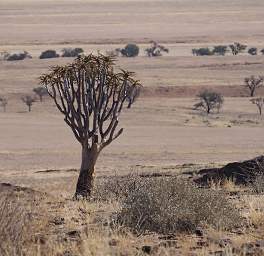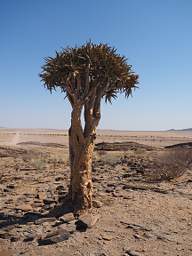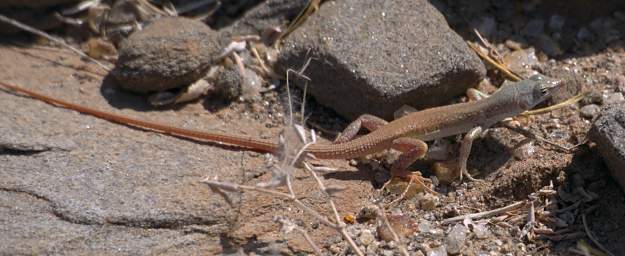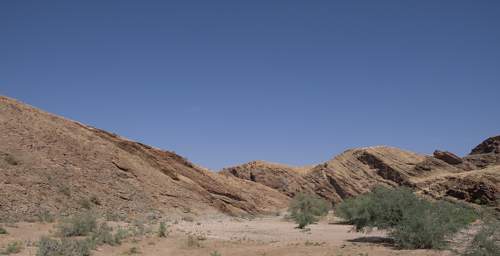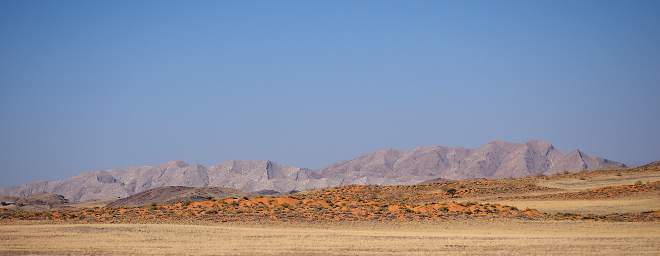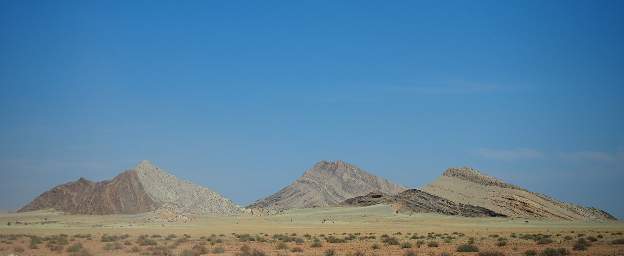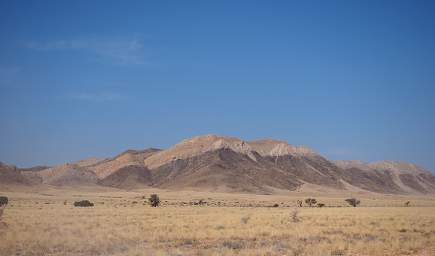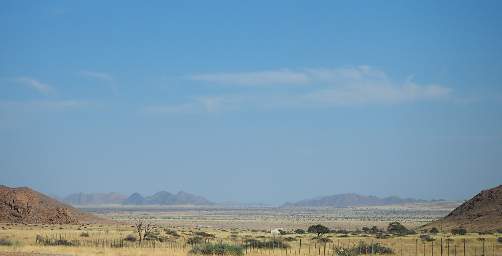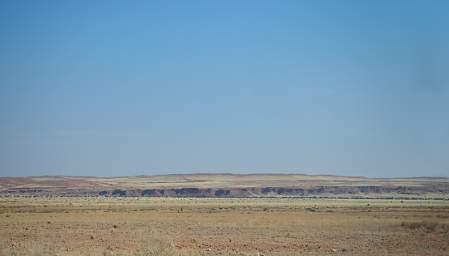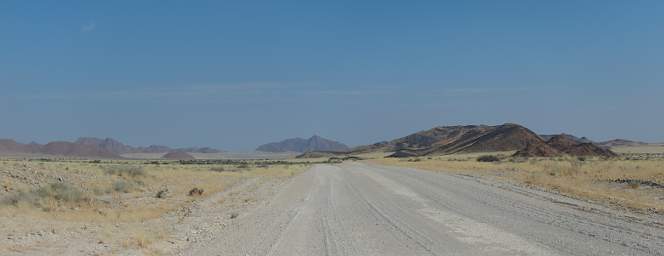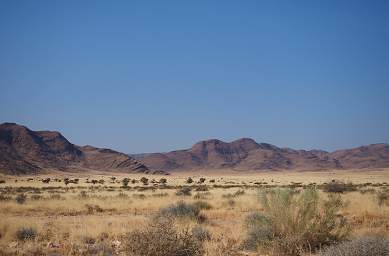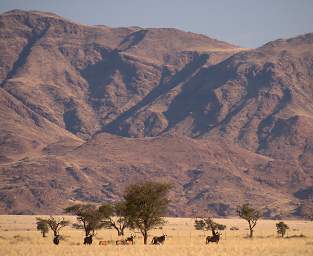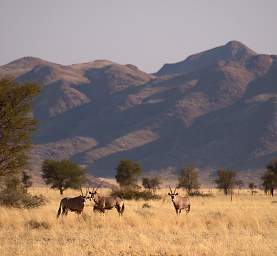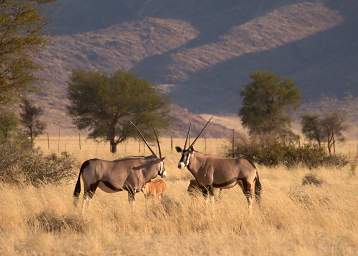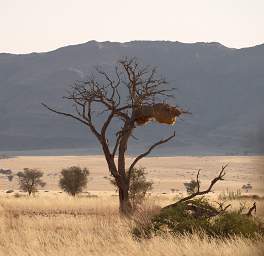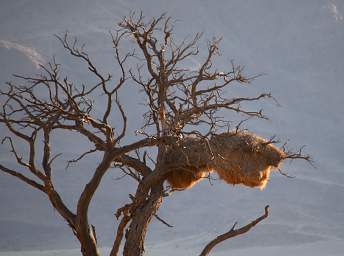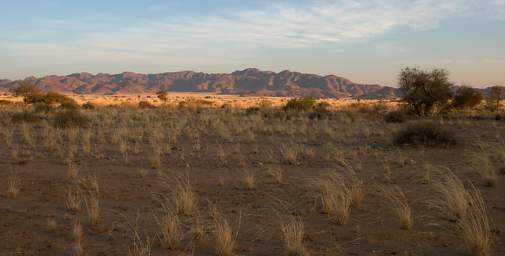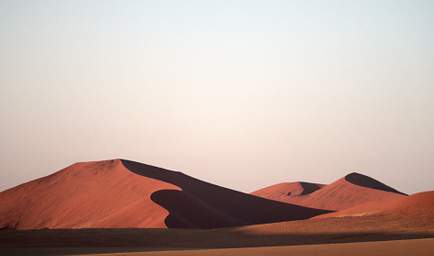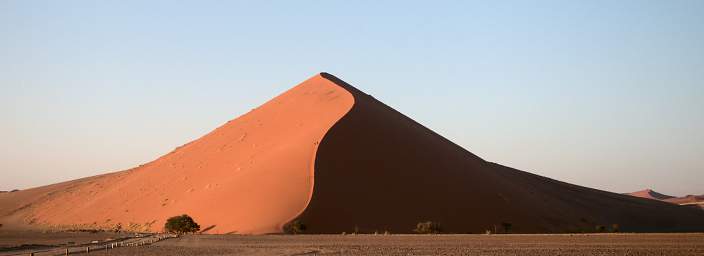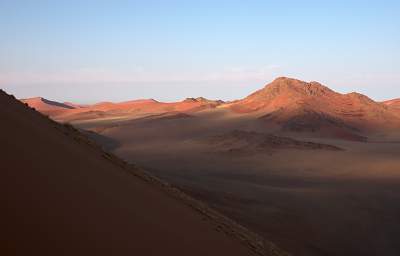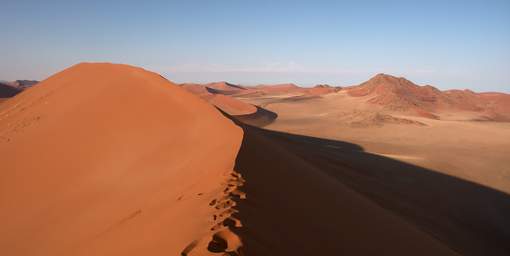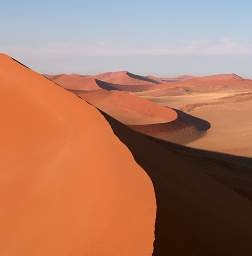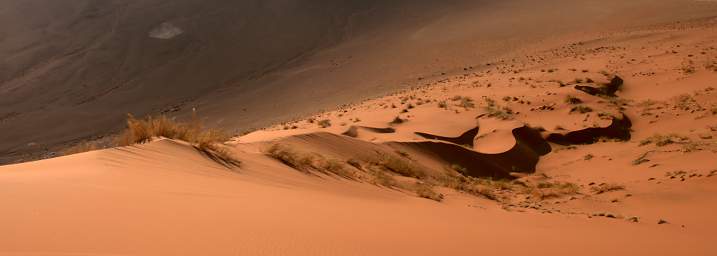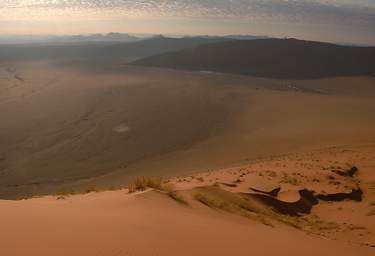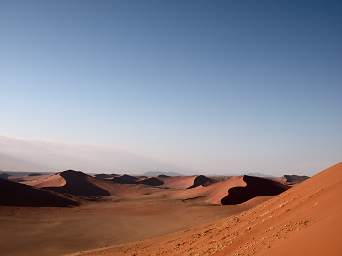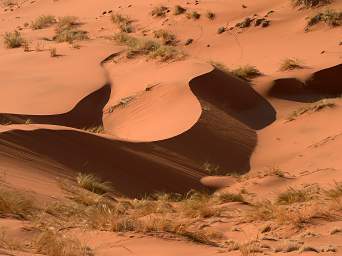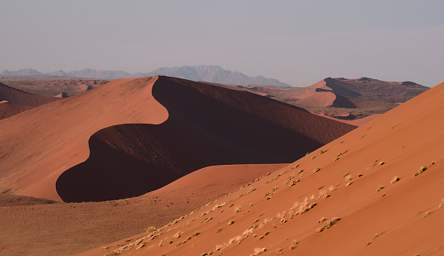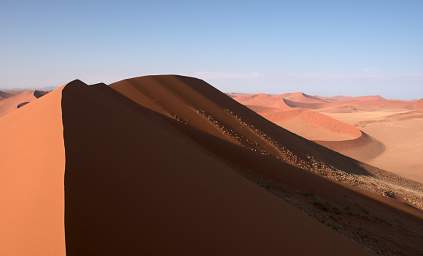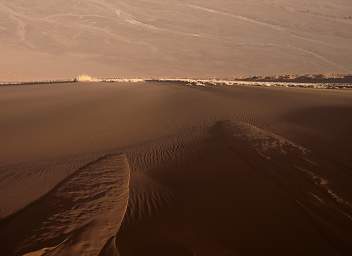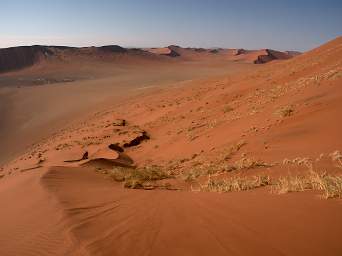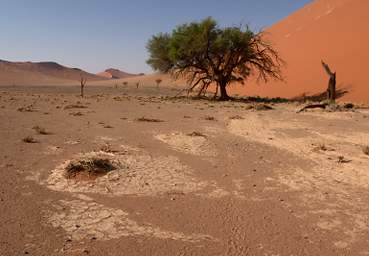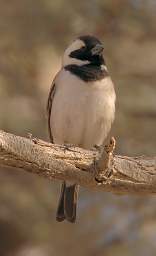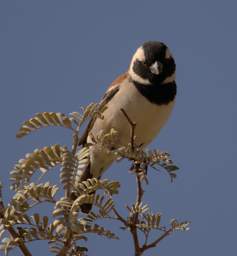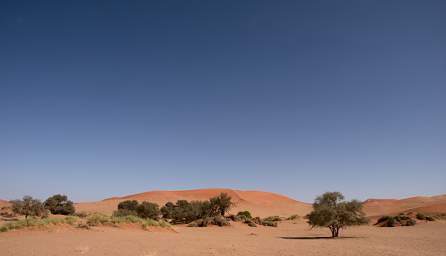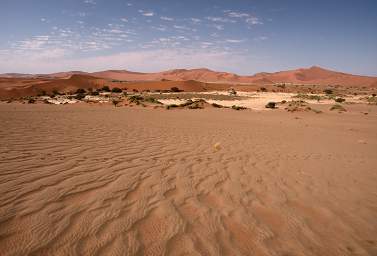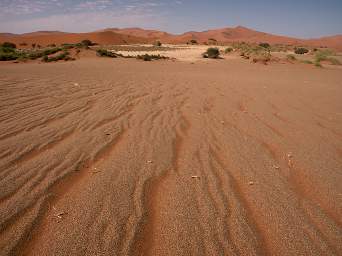Namib Naukluft National Park
An Amazing Landscape
August, 2014
Click on any image for a larger view;
Contact garya at this domain if you would like the high quality image for printing
Our group of World Teach volunteers left Swakopmund and headed north along the coast to Walvis Bay,
then turned inland.
In short order the nice paved road turned back to gravel,
and within a few miles we had left the coastal fog behind.
We were headed into the
Namib Naukluft National Park
and across the Namib Desert.
The Namib Desert is flat.
really flat.
Every so often a range of mountains sticks up,
without any preamble of foothills,
as if generated by a machine.
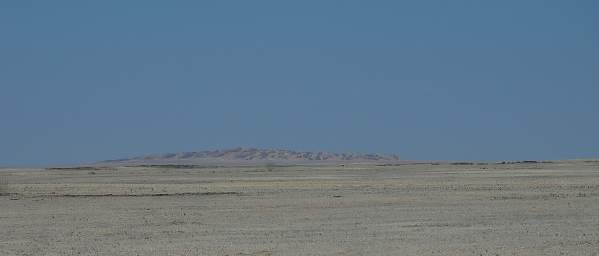 |
| Namib Desert |
The rest of the crew pretty much went to sleep --
they'd been up much of the night partying.
I just kept my nose glued to the window.
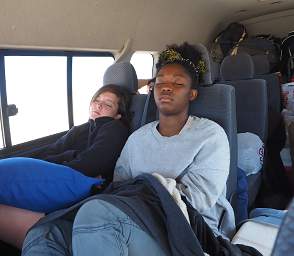 |
| Tired Campers... Diane and Jessica |
We traveled across the flat desert for quite a while,
then the land slowly began to rise.
We came to a place where there were a few of
Quiver Trees, a.k.a. Kokerboom, growing.
They are really an aloe; but a darn big one!
They are named after the fact that bushmen used to make quivers for their arrows
by hollowing out a branch -- the innter wood is much softer than the outer bark,
and is relatively easily removed.
I have to take that on faith, as I haven't tried it.
 |
| Quiver Trees |
While checking out the quiver trees we noticed there were a lot of lizards
skittering around to get out of our way.
I also couldn't help but notice the shrubs which looked dead, but weren't.
Like many desert-adapted plants,
they drop their leaves during the dry searson to reduce water loss through transpiration.
When it rains, they spring to life again.
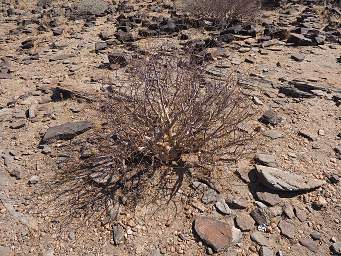 |
| Shrub |
The lizard below was pretty active, but s/he really didn't want his/her picture taken.
I haven't been able to figure out what species it is.
It had one whale of a long tail!
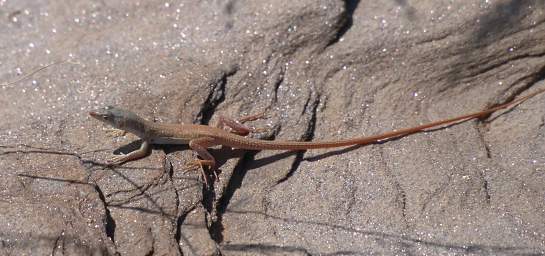 |
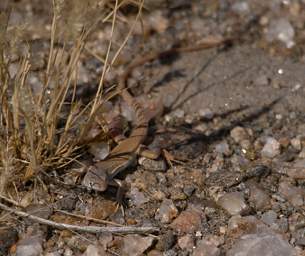 |
| Xxx Lizard |
There were a bunch of different lizards and skinks around,
and I couldn't identify any of them...
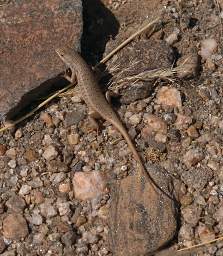 |
| Xxx Lizard |
The Quiver Trees were at the edge of the "flat" part of the Namib Naukluft,
and from there we slowly worked our way up and over a pass.
We crossed the Gaub River, which was (no surprise) dry.
It would have been interesting to hike up it and see what you could find hiding here and there.
 |
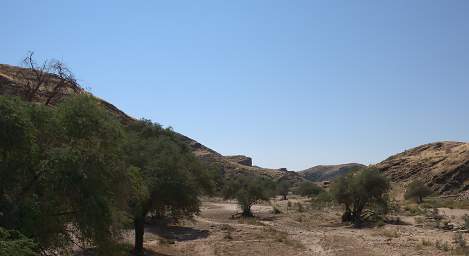 |
| Gaub River Bed |
Then we drove for quite a ways across the Namib Naukluft
in a constantly changing landscape of stunning beauty.
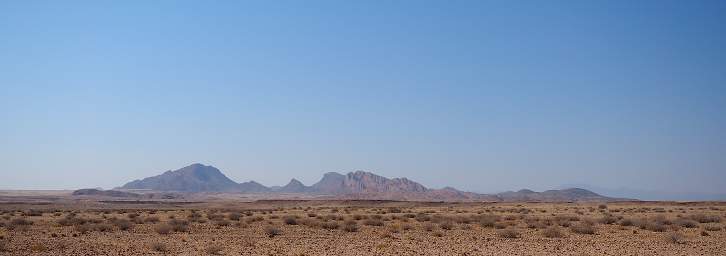 |
| Namib Naukluft |
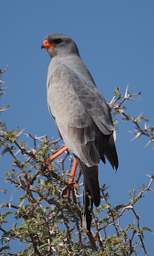 |
| Pale Chanting Goshawk |
We finally arrived at our campground (Little Sossus Camp, run by
Little Sossus Lodge )
in late afternoon.
The rest of the crew went off to a waterfall for a shower;
Dona and I took the opportunity to do a short hike out into the desert around camp.
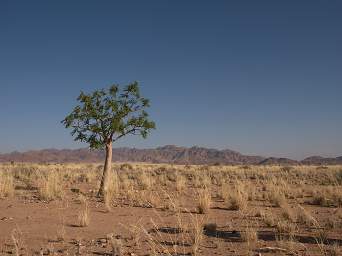 |
| Namib Naukluft near Camp |
One of the things we found was a huge locust,
probably 4" long.
It's hard to imagine what a sky full of them would be like.
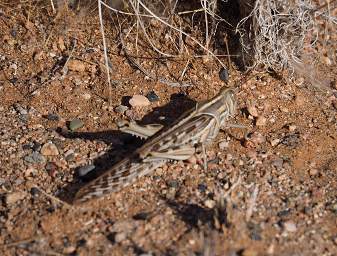 |
| Big Locust |
We headed over toward a line of trees where Springbok and Oryx were grazing.
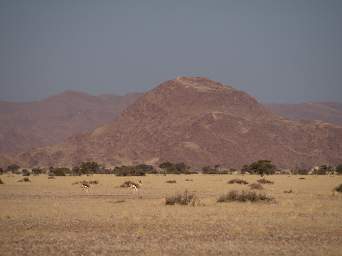 |
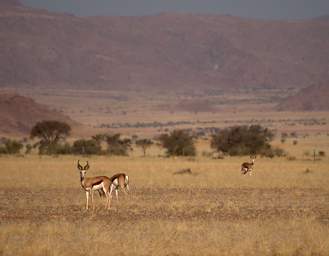 |
| Springbok |
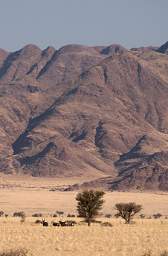 |
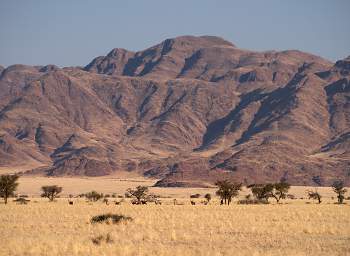 |
| Oryx |
There was a small colony of Desert Ground Squirrels
which didn't want us to get very close.
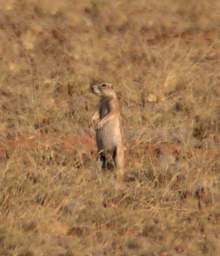 |
| Desert Ground Squirrel |
As we walked further from camp we could see some large
Sociable Weaver nests,
so we headed that direction to give them a closer inspection.
Unfortunately, they were on a private game ranch and just before we got to them we were stopped by a tall fence.
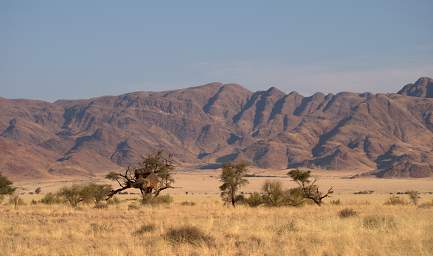 |
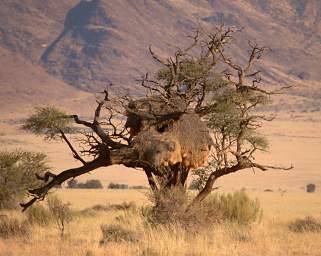 |
| Sociable Weaver Nests |
We came upon the nest of some ground-nesting bird,
with one broken open egg shell in it.
It looked like the little guy made it out of the egg alive,
but who knows what happened after that!
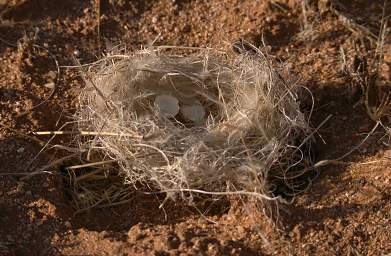 |
| Nest Broken Eggs |
The view all around was stunning -- seemingly boundless grass plains surrounded by rugged mountains on all sides.
A dry but none-the-less vibrant ecosystem.
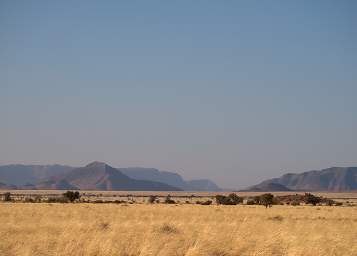 |
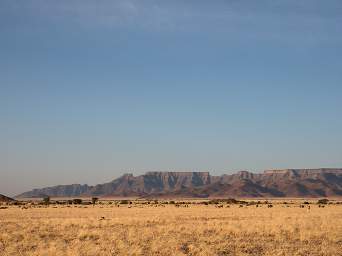 |
| Namib Naukluft |
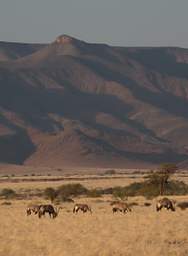 |
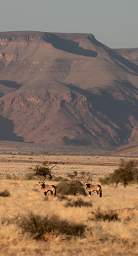 |
| Oryx |
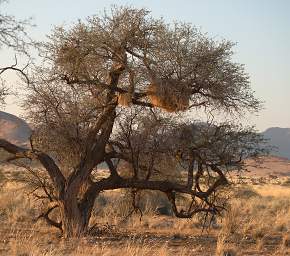 |
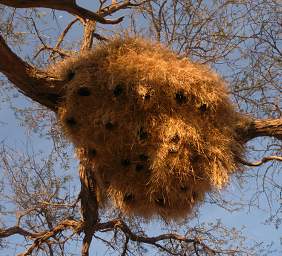 |
| Sociable Weaver Nest |
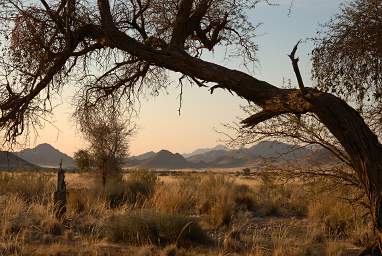 |
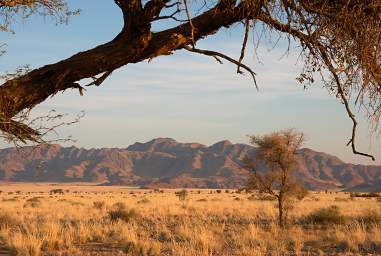 |
| Namib Naukluft |
As we walked back to camp we were treated to a delightful Namibian sunset;
then it was time to fire up the Braii!
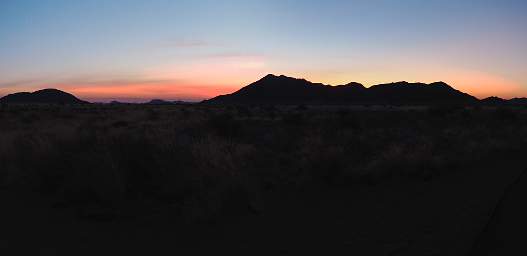 |
| Namib Naukluft Sunset |
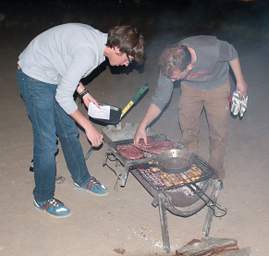 |
 |
| Fletcher and Bret Tending the Braii |
Evening, Dona and Diane |
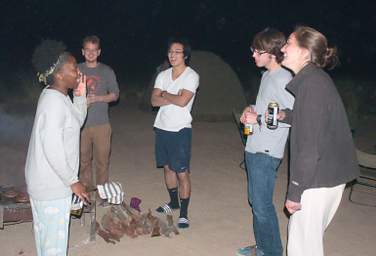 |
| Jessica Rappin'; Bret, Shawn, Fletcher, Katie |
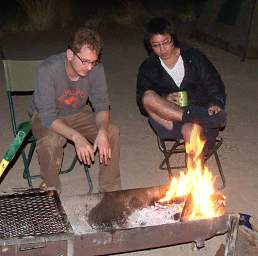 |
 |
| Bret and Shawn |
Bret, Jessica and Shawn |
Someone had managed to get all the ingredients for S'mores,
so we all stuffed ourselves.
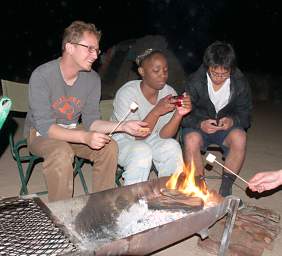 |
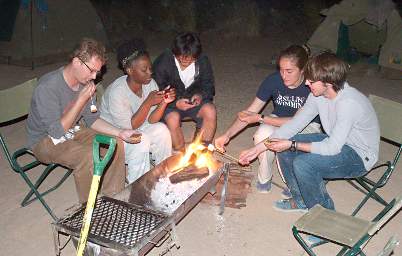 |
| S'mores! |
| Bret, Jessica and Shawn |
Bret, Jessica, Shawn, Katie and Fletcher |
The next morning we headed to the Sossusvlei area,
with the goal of watching the sun rise from the top of one of the dunes.
We were too late starting for that, but we did get some nice morning light on the dunes.
 |
| Sossusvlei |
As the sun was coming up already,
we picked a likely looking dune, pulled over, and started up.
It appears that this was "Dune 45,"
which according to Wikipedia is the most photographed dune in the world.
We were fortunate and had it to ourselves while we were on it.
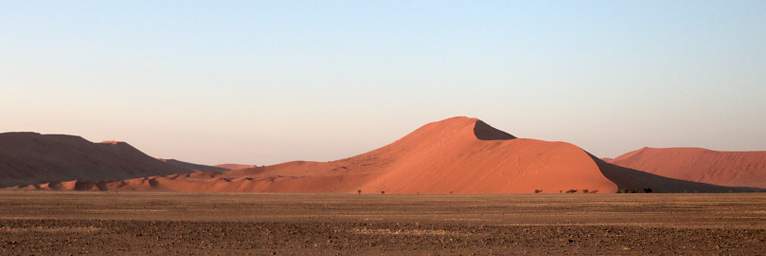 |
| Our Chosen Dune |
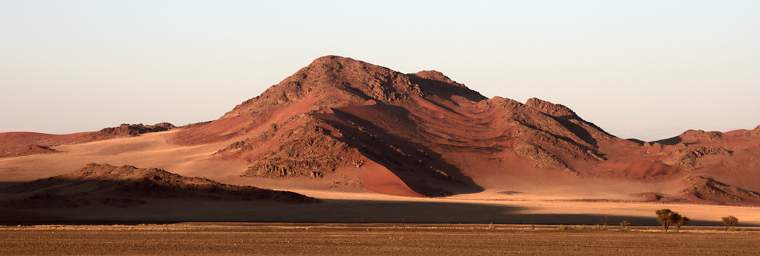 |
| Neighboring Dune |
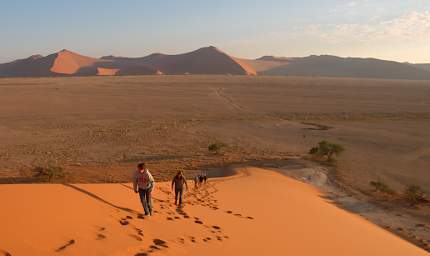 |
| The group working their way up the dune. |
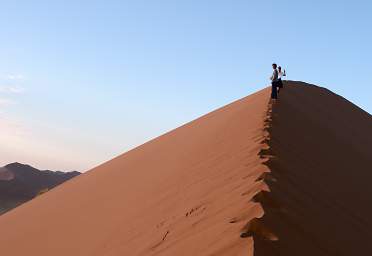 |
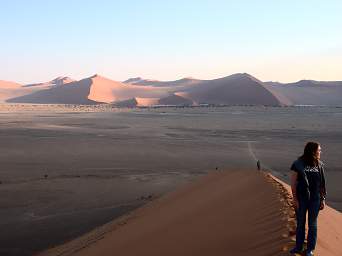 |
| Fletcher and Shawn |
Katie |
 |
| Dune Grass |
 |
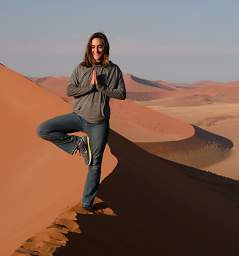 |
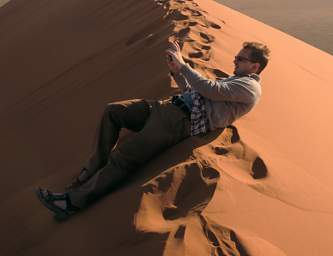 |
| Katie and Fletcher |
Katie |
Bret |
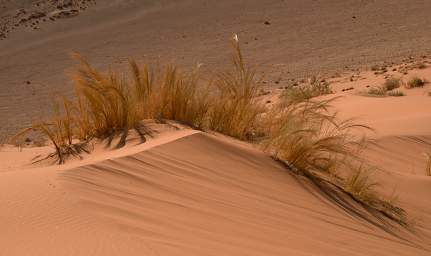 |
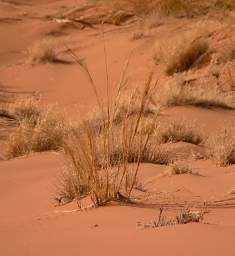 |
| Dune Grass |
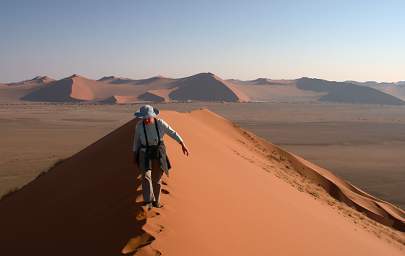 |
| Dona on the Home Stretch |
 |
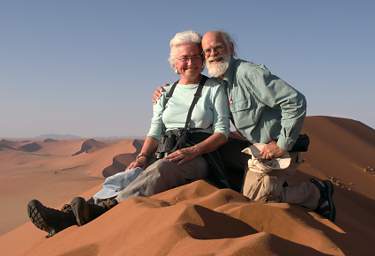 |
| Dona and Gary |
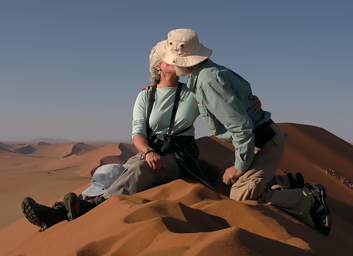 |
| Rewards for the hard work... |
A sand dune looks like a totally inhospitable place,
yet there are creatures which thrive there.
On the way up we found tracks of a lizard.
 |
| Lizard Tracks |
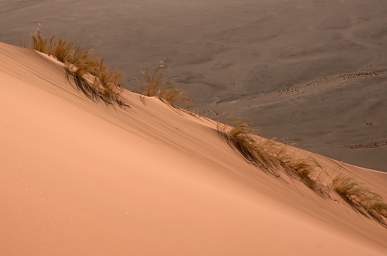 |
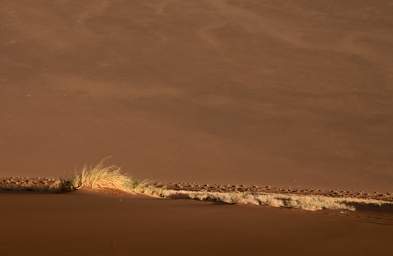 |
| Dune Grass |
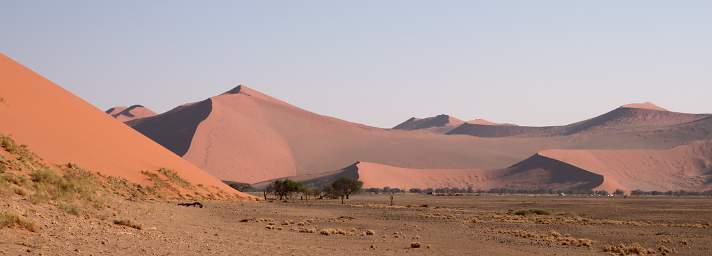 |
| From the Bottom |
 |
| Once Upon a Time, there was a Tree |
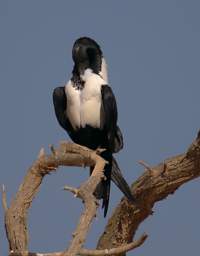 |
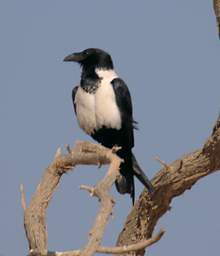 |
| Pied Crow |
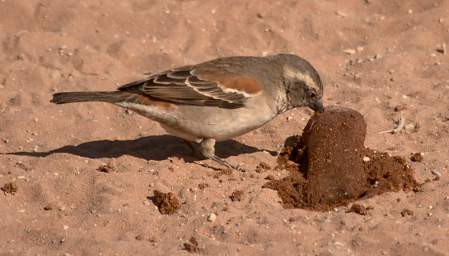 |
| Cape Sparrow (Female) |
Then we drove on to the end of the road,
to the actual place named
Sossusvlei.
In Afrikaans, a "vlei" is a lake;
in Nama, "sossus" means something like "dead end".
Sossusvlei is the sink for an ephemeral desert river, the Tsauchab.
Like most rivers in Namibia, it is almost always dry.
The above link shows a satellite image of it after heavy rains.
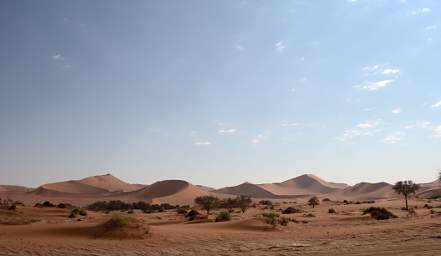 |
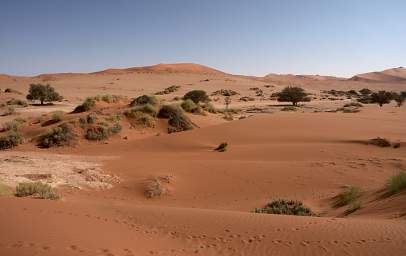 |
| Sossusvlei |
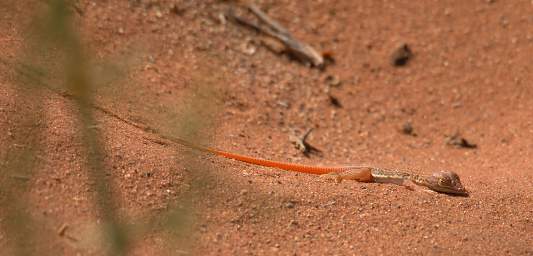 |
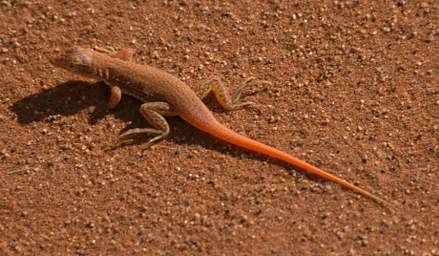 |
| Shovel Nosed Lizard |
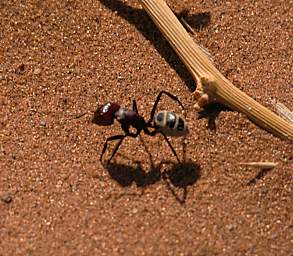 |
| Ant |
 |
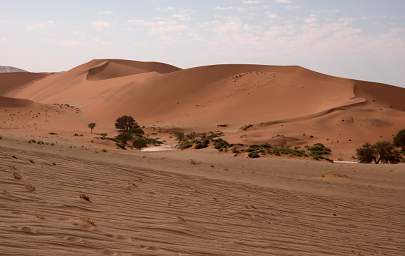 |
| Sossusvlei |
From Sossusvlei we headed back to Windhoek,
where we took part in the 2014 World Teach Information Technology Conference (Next).






